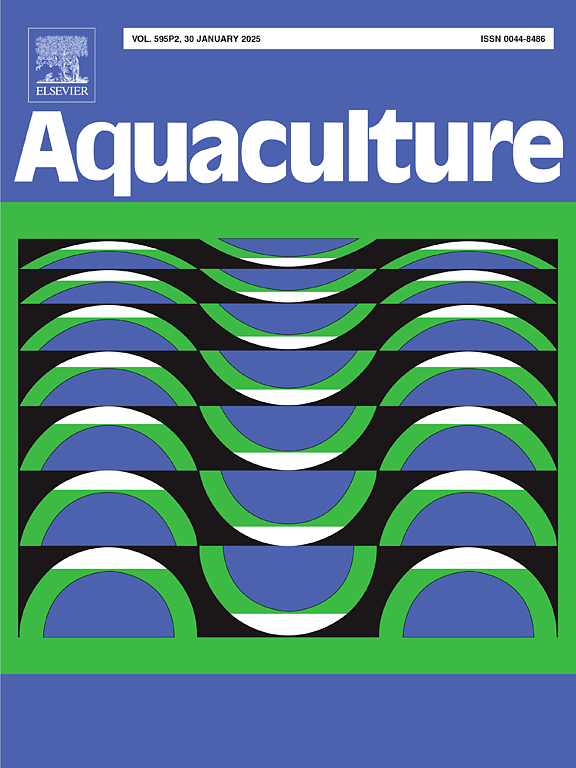Dietary Carica papaya and alpha-lipoic acid synergistically promote resistance to Aeromonas hydrophila, digestive function, growth, physiological, and antioxidant responses of Nile tilapia (Oreochromis niloticus) raised under high densities
IF 3.9
1区 农林科学
Q1 FISHERIES
引用次数: 0
Abstract
Feed additives are edible ingredients that are very sparingly added to fish diets to improve the nutritional value of feed, which in turn enhances fish growth and health. Most recent research focused on their single use, but little is known about their combined application. Hence, a 7-week feeding trial was conducted to investigate the consequences of the dietary addition of papaya (Carica papaya) leaf powder (CPP) with or without alpha-lipoic acid (AL). The assessment encompassed the influence on growth, digestive capacity, body composition, physiological and antioxidant response, as well as disease resistance (Aeromonas hydrophila challenge). Five treatments containing 225 fish (N = 45 fish/group, 3 polyethylene cages /group, 15 fish/cage) with an average weight of 6.65 ± 1.85 g were haphazardly assigned. For 7 weeks, fish received basal diet supplemented with CPP alone or with AL [0 % (control), 2 %CPP (CPP2), 3 %CPP (CPP3), 2 % CPP with 0.1 %AL (CPP2 + AL0.1), and 3 %CPP with 0.1 %AL (CPP3 + AL0.1)]. Results displayed that CPP alone or with AL-fortified diets substantially boosted growth performance and digestive enzyme activity (amylase, lipase, and trypsin). Dietary CPP alone or with AL notably increased body lipid content, serum total protein, and hepatic antioxidant (reduced glutathione, superoxide dismutase, and total antioxidant capacity) parameters. Moreover, blood glucose and hepatic malondialdehyde showed lower values in the CPP alone or with AL diets. Surprisingly, the combination groups especially the CPP2 + AL0.1 group achieved the best results (P < 0.05) for these variables. Fifteen days post-challenge with A. hydrophila, the cumulative mortality declined among fish fed CPP alone or with AL diets, where the CPP2 + AL0.1 group did not record any mortality. Overall, the dietary intervention of CPP (2 %) with LA (0.1 %) by their synergistic potential can promote disease resistance, physiological-antioxidant status, growth, and digestive capacity of Nile tilapia. These advantageous outcomes can support the development of sustainable aquaculture.
求助全文
约1分钟内获得全文
求助全文
来源期刊

Aquaculture
农林科学-海洋与淡水生物学
CiteScore
8.60
自引率
17.80%
发文量
1246
审稿时长
56 days
期刊介绍:
Aquaculture is an international journal for the exploration, improvement and management of all freshwater and marine food resources. It publishes novel and innovative research of world-wide interest on farming of aquatic organisms, which includes finfish, mollusks, crustaceans and aquatic plants for human consumption. Research on ornamentals is not a focus of the Journal. Aquaculture only publishes papers with a clear relevance to improving aquaculture practices or a potential application.
 求助内容:
求助内容: 应助结果提醒方式:
应助结果提醒方式:


